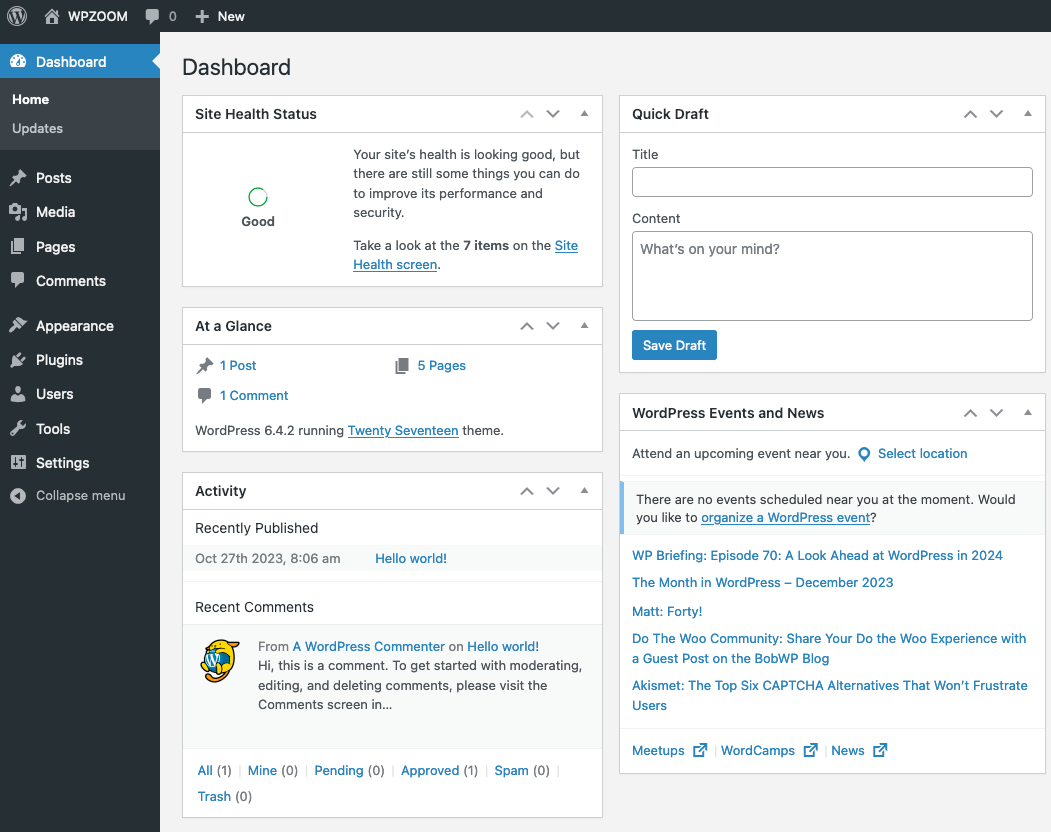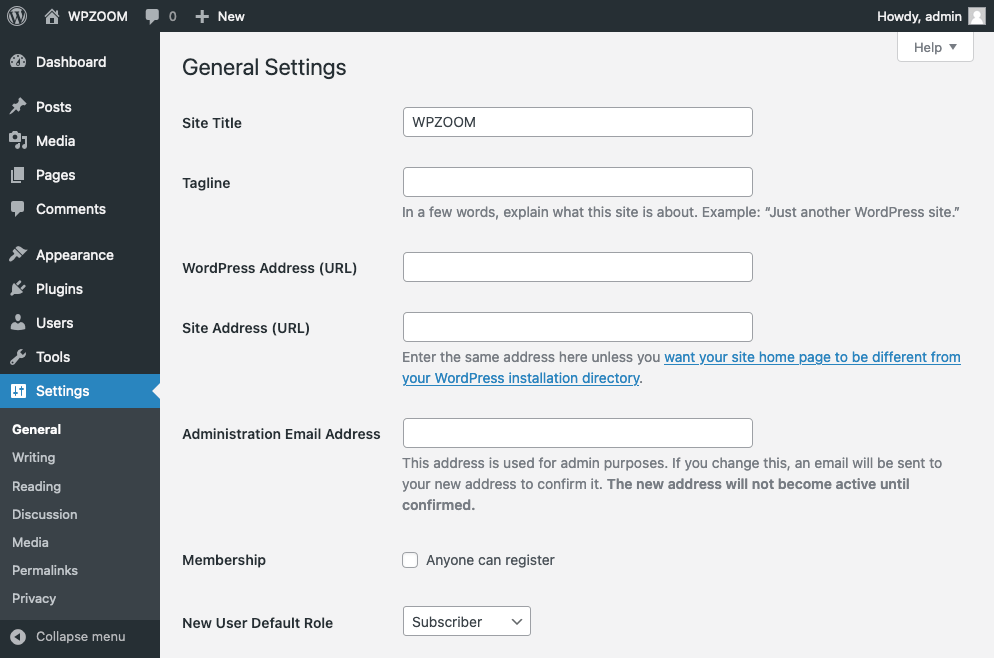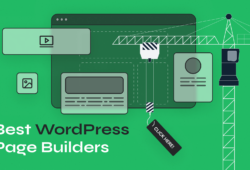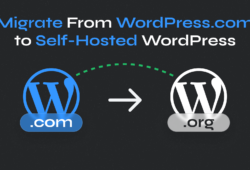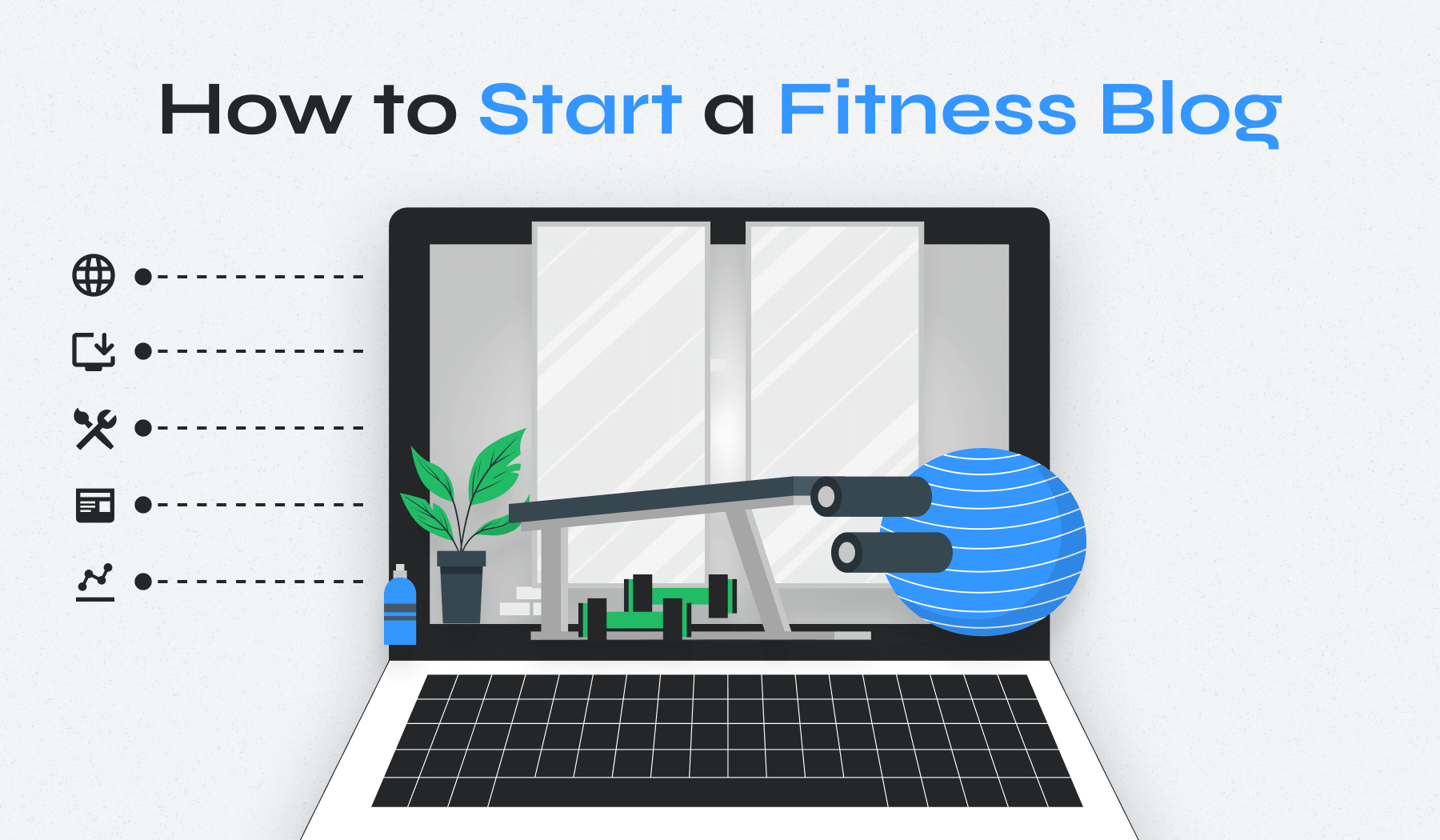
Starting a fitness blog is a very interesting adventure. It will require some technical knowledge, but mainly a good idea and some experience in the fitness world.
Our guide will walk you through the process of learning how to start a fitness blog step by step. We will provide all the information you need to create a successful fitness website, from picking out a domain name to how to get your stories out to eager readers.
Quick Guide to Starting a Fitness Blog
Here’s a quick summary of the critical steps involved in creating a fitness blog:
- Step 1: Identify Your Fitness Blog Niche
- Step 2: Pick a Name and Register Your Domain
- Step 3: Choose the Right Hosting Provider
- Step 4: Install WordPress
- Step 5: Select a WordPress Theme
- Step 6: Customize Blog Settings
- Step 7: Install Essential Plugins
- Step 8: Plan and Create Captivating Posts
- Step 9: Promote and Expand Your Fitness Blog
- Step 10: Make Money With Your Fitness Blog
Now, explore each aspect in more detail to ensure you’re well-equipped to make your fitness blog successful.
10 Steps to Start a Fitness Blog: A Detailed Guide
The steps to create a fitness blog are relatively straightforward. Still, some parts are slightly unintuitive, and this guide will make the whole process much more manageable.
1. Identify Your Fitness Blog Niche
Fitness is a vast and complex concept. It can mean completely different things to different people and can sometimes be vague. For some, being fit means running at a certain speed or covering a certain distance. For others, it means being able to lift a certain amount of weight.
The key to identifying the niche you will focus on is making it something you are interested in and invested in. This will make things considerably easier and more manageable for you. Blogging about something you understand and can relate to is essential.
If you decide to write a fitness blog, make it your own to a certain extent. If you are personally interested in running, choose a fitness niche related to that, whether it’s about running shoes and equipment, the whole process and experience, or simply about nice trails around the world to go for a run on.
You should also do some research on the niche to see what your competition is going to be. Ideally, you tackle a niche with as little competition as possible. Still, considering how popular fitness is nowadays, chances are that you will have some competition regardless of the niche you choose.
2. Pick a Name and Register Your Domain
If you are happy with your chosen niche and decide to attack it with your fitness blog, you must also select a name. This name should be short, catchy, and relevant.
Your brand’s name will need to be representative of the niche. It should be relevant, easy to understand, and remember. Feel free to use keywords important to your niche and word combinations. Always think of your target audience and what they will respond best to.
Another thing to consider is its availability. Once you’ve found the ideal name for your fitness blog, ensure it is available and not already in use. You will also need to ensure that the domain name is available in its purest form (as close to the actual brand name as possible, ideally a perfect match).
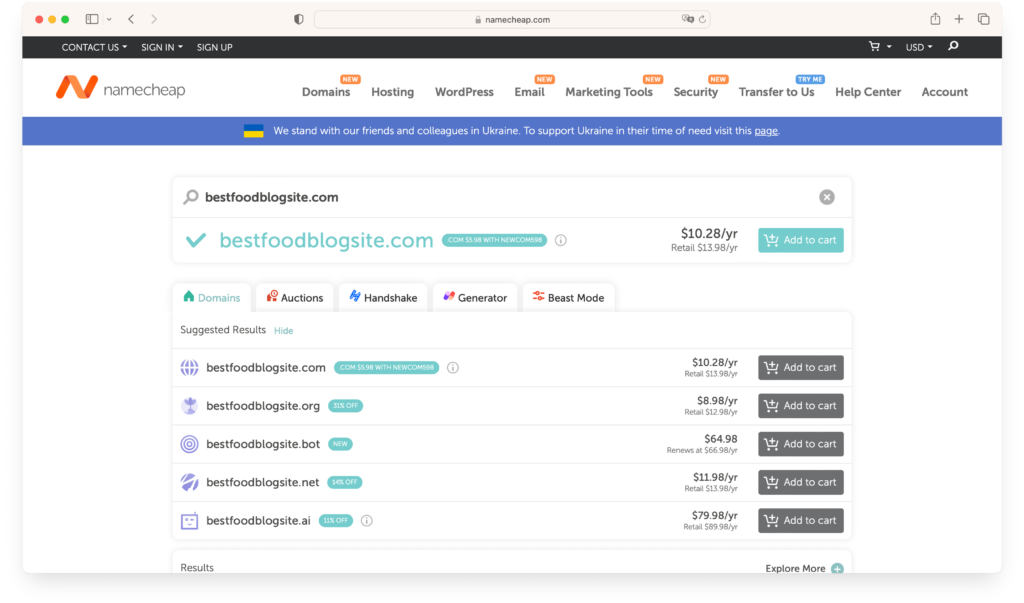
You can easily search for your desired domain name and see if it is available. If it is not, you will also receive different suggestions that will often be close enough to what you were initially looking for.
Purchasing your domain is straightforward, and the prices are more than decent.
3. Choose the Right Hosting Provider
Now that you have your domain name, the next step is to find a hosting provider to help you keep your website online. The right hosting provider should allow you to balance the offering’s costs, uptime, and complexity.
That means you should always choose a hosting provider that is not too expensive, has a good reputation, and offers features that will make running your website easier.
Things like free SSL certificates, an easy WordPress installer, and 24/7 support should be included in the price.
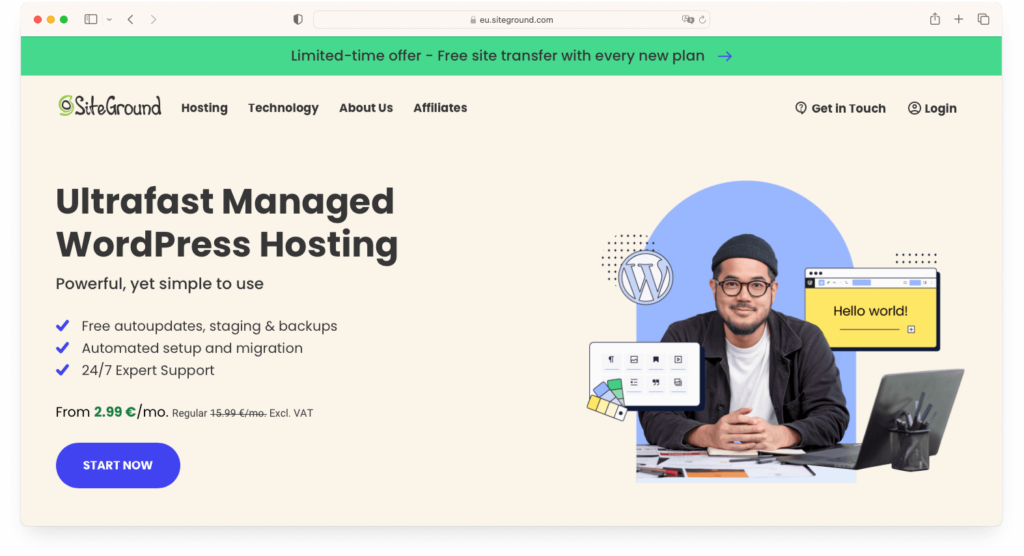
If you are looking for cheap hosting providers for your fitness blog, you should know that this doesn’t necessarily mean that you need to sacrifice quality.
4. Install WordPress
The most convenient way to set up a fitness blog is through a WordPress website. There are many reasons why you would choose to use WordPress for your blog, including the fact that the WordPress blogging platform is easy to set up and provides a good balance between ease of use and performance.
The first step in using WordPress is installing it on your server. You can do this in several ways, but the most commonly used and straightforward is following these steps:
- Log into Your Hosting Control Panel. Depending on your hosting provider, this could mean logging into cPanel, SPanel, Froxlor, or something similar.
- Locate the WordPress Installer and Start the Installation Process. This is usually a one-click option through services like Softaculous, Quickinstall, Fantastico, or an alternative.
- Enter Your Site Information. You must name your website, create your login information, and enter it into the required fields. This is how you establish your way of logging in as an administrator in the WordPress Dashboard after the installation.
- Access Your WordPress Dashboard. Once the setup is complete, you will be able to access your dashboard using the login information provided in the previous step.
5. Select a WordPress Theme
Choosing the right WordPress theme is one of the most important steps in creating your fitness blog. This can make or break both your users’ experience and the process of actually creating and uploading content for you as a creator.
Countless options are available, and finding the right one without guidance can be challenging. While there are several things to consider, we recommend the Indigo theme as a top choice as a very well-performing magazine theme. This theme was designed with the needs of bloggers in mind, allowing you to create interactive fitness content easily.
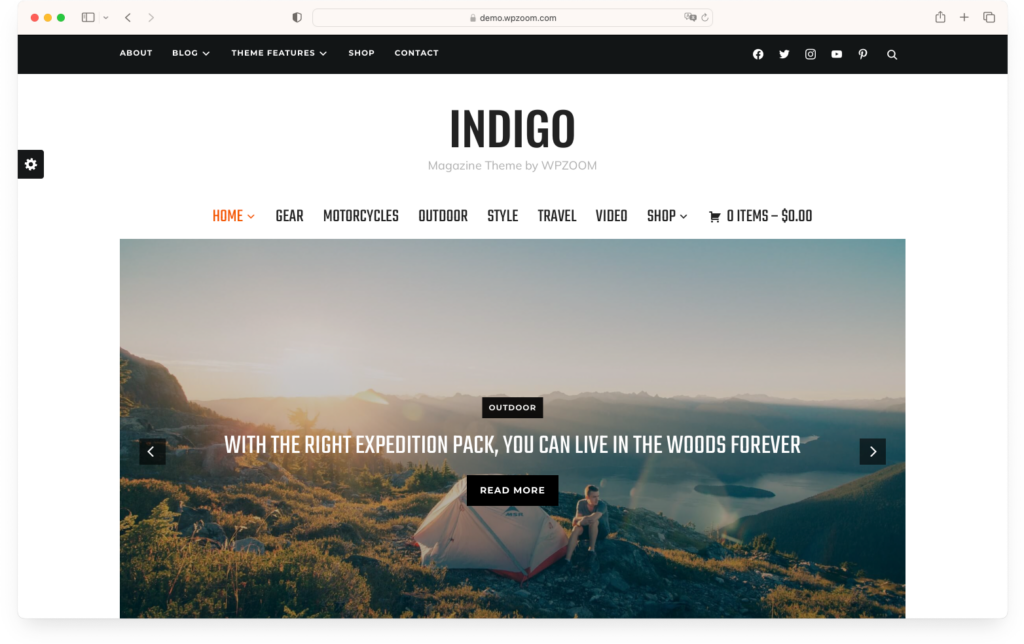
The Indigo theme is an amazingly versatile tool for fitness bloggers because of its multiple layout options, perfect suitability for beginners and advanced users, SEO-friendly code, and translation-ready.
There are several alternatives you should take into account in case Indigo is not your cup of tea, and you need to have some choices narrowed down:
Of course, countless other themes would work well for a fitness blog, depending on your niche and personal preferences. If you don’t make your choices based on the recommendations above, knowing what to look for when choosing a WordPress theme is essential.
Once you have chosen a theme, you must purchase, install, activate, and customize it.
6. Customize Blog Settings
It will take some time to transform a WordPress theme into a website with proper functionality and a fitness blog look. You will need to think ahead and realize what exactly you want your blog to achieve, how you want to present the information to your readers, and what features are essential to your goals.
The first step toward creating your fitness blog is to customize and adjust the theme to your liking. You need to consider that different types of fitness blogs will require different types of websites.
Personal trainer blogs require a different aspect and layout than a simple exercise blog. The need for different layouts and overall design comes with a need for different levels of customization. This step is about learning how to personalize your fitness blog and make it as appealing as possible.
Here are some essential steps you need to follow.
- Personalize Your Site Title and Tagline. Your site title and tagline are important and must be short, catchy, and relevant. They will be the first thing your visitors will read about your blog, and you can easily adjust them as needed from the Settings section.
- Design an Intuitive Navigation Menu. Making your fitness blog very easy to navigate will ensure readers can access the information they need quickly and easily. This, for you, will mean more time spent on the website and a better retention rate. People should be able to easily find what they are looking for through your site’s menu. Creating your navigation menu is simple enough through the Appearance > Menu tabs.
- Select Your Homepage Layout from Settings > Reading. Optimizing the layout of your homepage will impact the overall experience you offer your readers. The time people spend on the homepage, the number of pages they visit, and the frequency with which they return will also influence how well your fitness blog performs on search engines.
- Manage Comments Effectively under Settings > Discussion. Staying in touch with your audience is an excellent way to ensure you deliver the content your readers are interested in. You should always open your ears to what your fans or readers say. Managing your comments effectively means ensuring that the important information reaches your inbox while the spammy messages are filtered out.
- Optimize Your URL Structure from Settings > Permalinks. A relevant and tidy URL structure will make your website a credible source of information for your readers and search engine crawlers. Keeping your URLs formatted correctly will also significantly affect how easily your readers navigate your site.
7. Install Essential Plugins
Any WordPress website needs a certain collection of plugins for the best performance. Choosing the right plugins to meet your particular functionality, design, and performance needs will be a tough adventure without some guidance. Here’s a little about WordPress plugins and what they are.
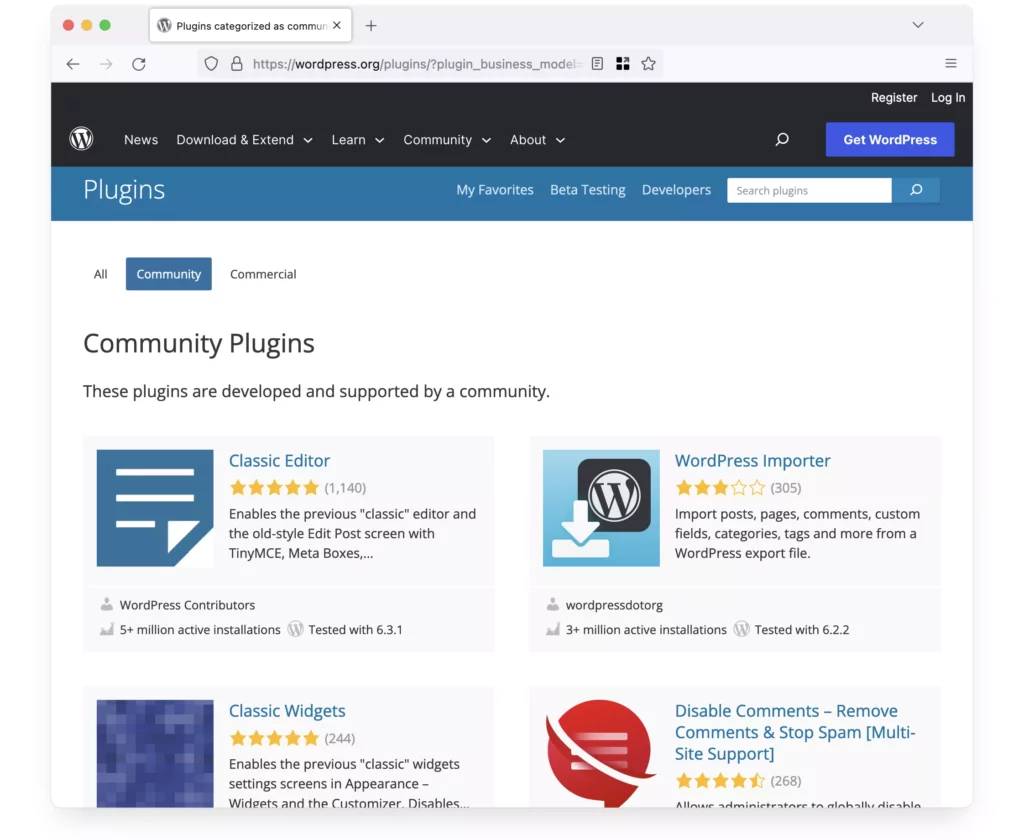
Regarding essential WordPress plugins, consider using a top-rated security plugin, an SEO optimizer, a performance booster, and a comments/forms manager, among other things.
Installing WordPress plugins is relatively easy and only requires a bit of knowledge.
You should always try to balance the number of plugins you use with their impact on your site’s performance. Nobody likes a slow-loading website, but the same is true of a site that lacks functionality.
8. Plan and Create Captivating Posts
Learning how to start a fitness blog is just part of the story. Keeping your readers entertained and well-informed is a challenge that will extend over the years.
To have a successful fitness blog, you should always think ahead. Plan your blog posts to be relevant, interesting, and captivating for your readers. Release posts according to the time of year.
For example, focus your blog posts on outdoor activities during the warm season and indoor fitness, like gyms or home workouts, during the winter. Think ahead of upcoming holidays and find clever ways to advise your readers to squeeze workouts into their daily routines depending on the weather, holidays, and other factors influencing day-to-day activities.
9. Promote and Expand Your Fitness Blog
Promoting your health and fitness blog is essential. Social media is one of the most powerful tools at your disposal nowadays, as it provides several important platforms for gathering an audience for your blog.
The magic of social media is that you can filter out your audience indirectly based on their interests. For example, posting in relevant Facebook groups will ensure that the people you promote your content to are interested in fitness and healthy living.
Some tools can make this much easier. Social media plugins like the WPZOOM social media icons widget will encourage your readers to share the content they find interesting easily on the social media platforms of their choice.
Since fitness has a lot to do with the visual aspect of our bodies, it’s only natural for your readers to respond well to images in general. The learning curve to working out correctly and efficiently includes seeing certain exercises being done, which means that platforms like Instagram will be a big part of your promotional strategy.
The Instagram Widget plugin from WPZOOM will help you share your fitness journey more smoothly and efficiently.
10. Make Money With Your Fitness Blog
Even though you might be doing your part in the fitness world out of pure passion, there’s no reason to miss out on opportunities to earn some money. To monetize your fitness blog, you need a good strategy and an understanding of the importance of diversification.
There are countless ways for you to earn money through your fitness blog if you start getting lots of traffic. Here are some of the most common ones.
- Display Ads. The most straightforward way to monetize your traffic is through display ads. Platforms like AdSense make this process smooth and efficient, and if your fitness blog does well in terms of traffic and traffic quality, it can be a form of passive income.
Simply “renting out” advertising space is a great and easy way to monetize all the traffic you get. It rewards you based on a CPM model, where you are paid according to how many people see the ads displayed on your site. - Affiliate Marketing. Affiliate marketing is another excellent option. You can join many platforms to become an affiliate for some the fitness industry’s most important and relevant brands.
The way affiliate marketing works makes it another ingenious way of monetizing your fitness blog. That is because you don’t get rewarded based on how often your visitors see the ads, but rather depending on how many purchase products or services you recommend.
As a fitness blogger, you can recommend various products and earn affiliate commissions: gym memberships, gym clothing, fitness equipment, shoes, supplements, and many other services and products.
You earn a commission every time a reader purchases something using the link you share on your website. - Sponsored Content. Another great way to earn money is to advertise other businesses on your fitness blog or cross-post content from other websites.
Sponsored content can mean anything from simple blog posts with backlinks to other sites to actual collaborations with other businesses in the health and fitness industry where you recommend each other’s products or services. - Digital Products. Digital products like e-books and training plans tailored to the main idea of your fitness blog can also be a great way for you to monetize your business. These digital products have the huge advantage of not requiring manufacturing or delivery costs.
Whether it’s a series of videos with workout routines or a podcast about fitness where you discuss the most pressing issues with experts in the field, your audience will certainly appreciate the chance to purchase additional, helpful content to help them achieve their goals.
Bottom Line
Anyone can quickly learn how to start a fitness blog; there is no question about it. However, being a successful health and fitness blogger will require a certain level of involvement, which can only be achieved if you have a true passion for the topic.
Taking a website from nothing to a relevant destination for your target audience will require effort, research, and relevant tools.
Here are some of the most relevant topics you will need to cover to ensure that your fitness blog is going to be successful:
- WordPress SEO: Learn more about SEO (Search Engine Optimization) best practices and their importance for your site’s visibility. What are the most essential techniques you need to implement?
- WordPress Speed Optimization: How important is loading speed for your WordPress blog? How can you optimize your site to prioritize performance without compromising design and functionality?
- WordPress Security: Learn how to keep your site and your users secure. What threats should you be aware of, and how can you overcome them?


